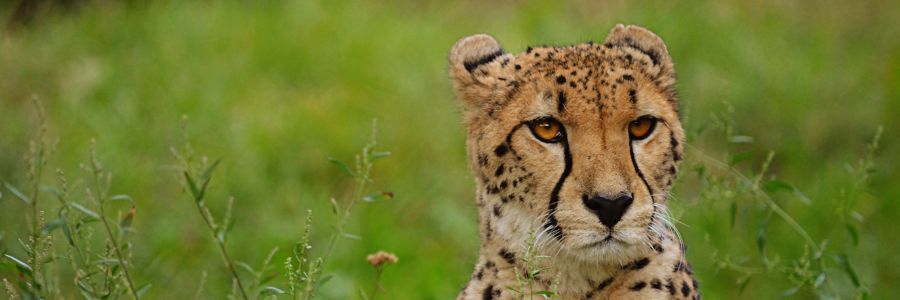Spotted Animals in Africa: Africa is home to a diverse array of wildlife, including many species of spotted animals that are instantly recognizable by their distinctive patterns. These animals have evolved unique adaptations to help them survive in the harsh and varied environments of the African continent, from the arid savannahs to the lush rainforests. Some are apex predators, such as the cheetah and leopard, while others, like the giraffe and hyena, play important roles as herbivores and scavengers. The spotted patterns on these animals’ fur or skin not only serve as camouflage, but also provide a visual cue for identification and social communication. The richness and diversity of Africa’s spotted animals are a testament to the complex and interconnected nature of the continent’s ecosystems, and the importance of preserving them for future generations to appreciate and study.
Spotted Animals in Africa
There are several spotted animals in Africa. Find some spotted animals in Africa
Cheetah
The cheetah is one of the most iconic and recognizable spotted animals in Africa. With its distinctive black spots on golden fur, the cheetah is a fast and agile predator that is found throughout sub-Saharan Africa. The cheetah’s spots provide effective camouflage in its natural habitat, allowing it to stalk prey and remain undetected until it is ready to pounce. Additionally, each cheetah has a unique pattern of spots, making it easy for researchers to identify individual animals in the wild. Unfortunately, cheetah populations are threatened by habitat loss and poaching, and efforts are being made to protect and conserve these magnificent animals for future generations.
Leopard
The leopard is another iconic spotted animal found throughout Africa. Known for its strength and stealth, the leopard is a large, solitary predator with a distinctive spotted pattern on its fur. The spots, which are actually rosettes, help to provide effective camouflage in the leopard’s natural habitat, allowing it to blend into its surroundings and stalk prey without being detected. Leopards are highly adaptable and can be found in a variety of habitats, from dense rainforests to arid savannahs. Unfortunately, like many of Africa’s big cats, leopard populations are threatened by habitat loss and poaching, and conservation efforts are underway to protect these magnificent animals for future generations.
African Wild Dog
The African wild dog, also known as the painted dog, is a highly social and unique-looking animal found throughout sub-Saharan Africa. It has a mottled coat of brown, black, and white spots that helps it blend into its surroundings, making it an effective predator. The African wild dog is known for its pack-hunting behavior, which allows it to take down large prey such as antelopes and zebras. Unfortunately, African wild dog populations are threatened by habitat loss and fragmentation, as well as persecution by humans who view them as a threat to livestock. Conservation efforts are underway to protect these unique and charismatic animals, which are an important part of Africa’s rich and diverse ecosystem.
Hyena
The hyena is a scavenging carnivore found throughout Africa, with a distinctive spotted coat that varies in color from brown to gray. It is known for its powerful jaws and ability to consume virtually every part of an animal, including bones and hooves. Hyenas also have a reputation for being ugly and unattractive, with their hunched appearance and eerie vocalizations adding to their eerie reputation. However, they play an important role in the ecosystem, serving as both predators and scavengers. Unfortunately, hyena populations are threatened by habitat loss and human persecution, and efforts are underway to protect and conserve these fascinating animals for future generations.
Giraffe
The giraffe is the world’s tallest land animal, and is found throughout sub-Saharan Africa. Its distinctive spotted coat is made up of irregularly shaped patches of color, ranging from light tan to dark brown, which help the giraffe blend into its surroundings and avoid predators. The giraffe’s long neck and legs, along with its unique cardiovascular system, allow it to reach leaves and branches that other herbivores cannot, making it an important browser in African ecosystems. Unfortunately, giraffe populations are threatened by habitat loss, poaching, and other human activities, and conservation efforts are underway to protect and conserve these magnificent animals for future generations.
Serval
The serval is a medium-sized wild cat found throughout Africa, with a distinctive spotted coat that is yellowish-brown with black spots. It has long legs and large ears, which make it an effective hunter of small mammals and birds in grasslands and wetlands. The serval is a solitary animal, and is primarily active at night. Its unique adaptations, such as its long legs and keen senses, allow it to thrive in its natural habitat, and it plays an important role in controlling rodent and bird populations. Unfortunately, serval populations are threatened by habitat loss and poaching, and efforts are underway to protect and conserve these fascinating and important animals for future generations.
These are just a few examples of the many spotted animals that can be found in Africa, each with their own unique adaptations and ecological roles.
